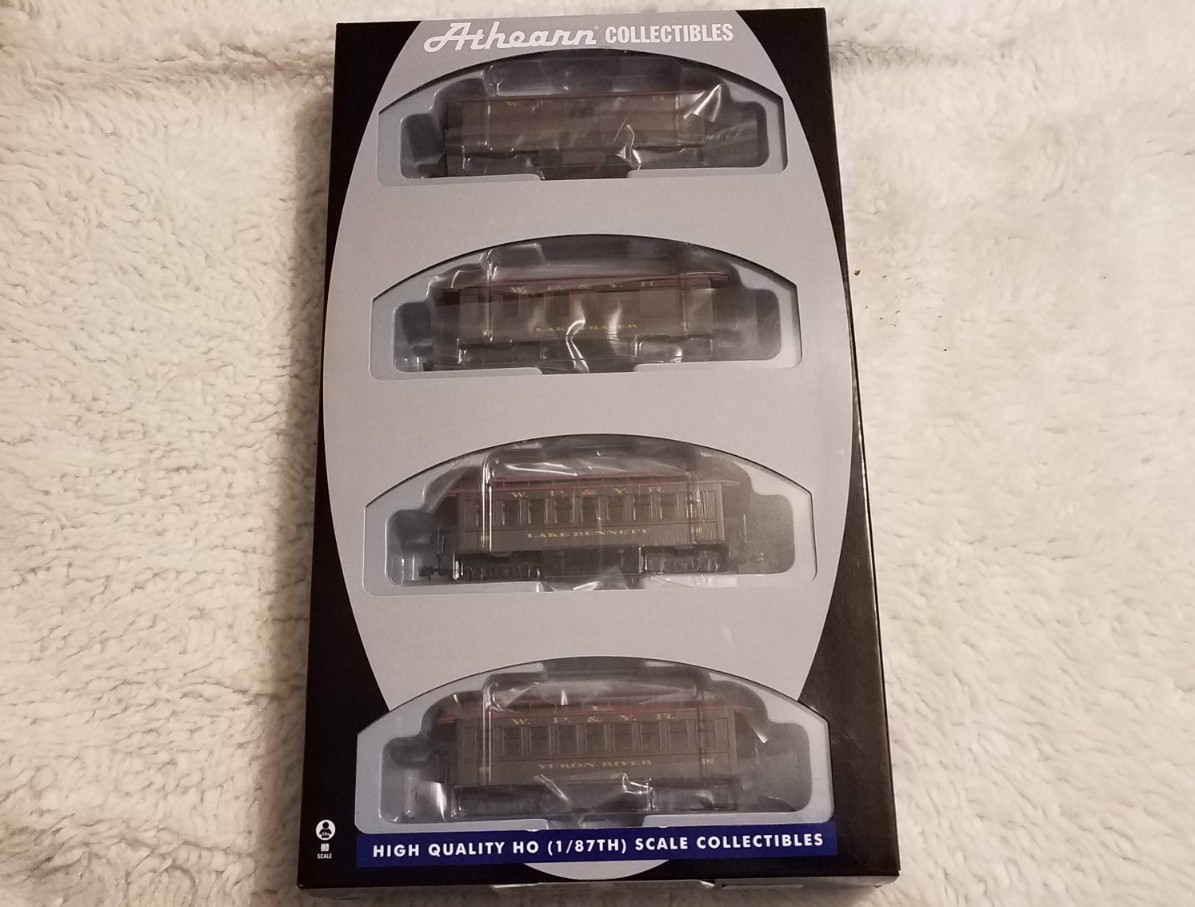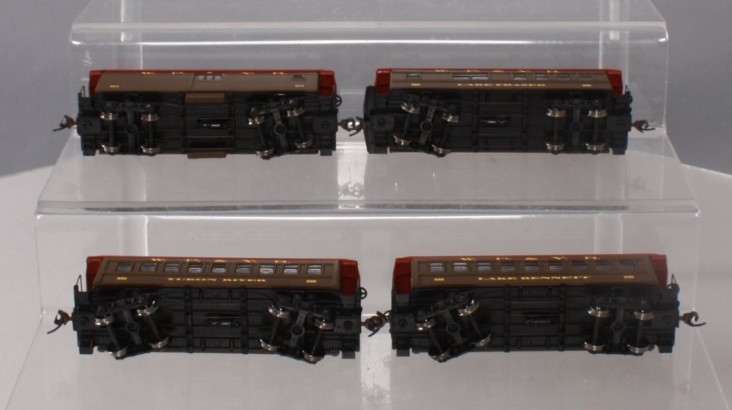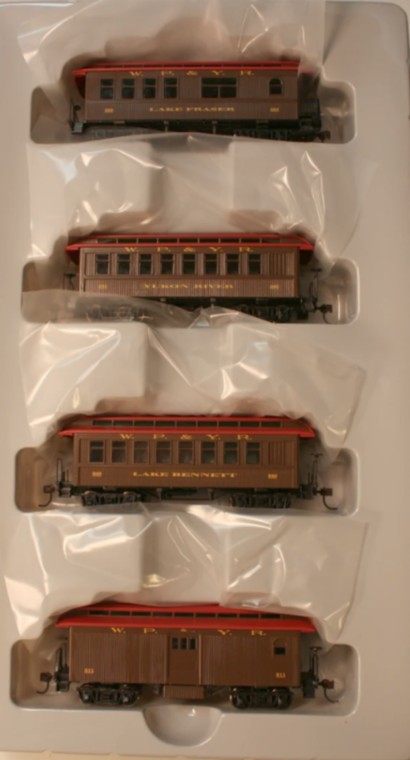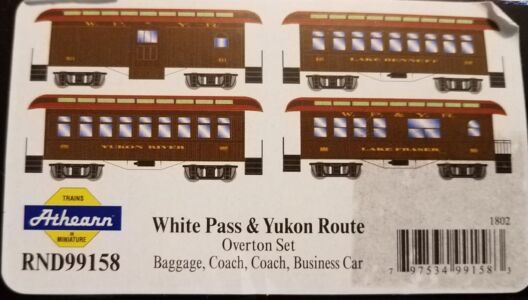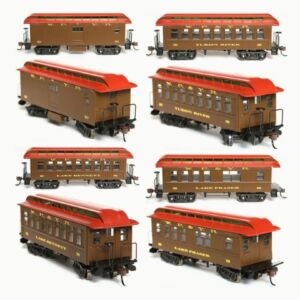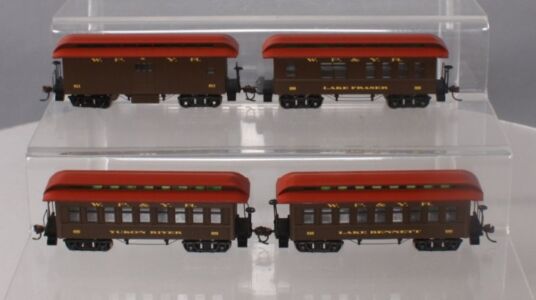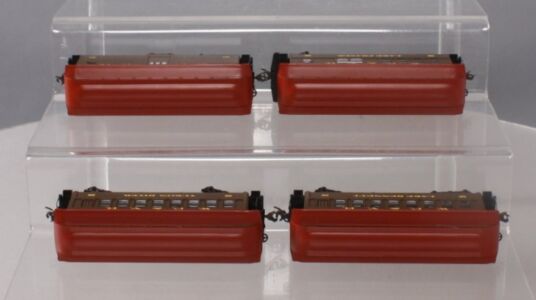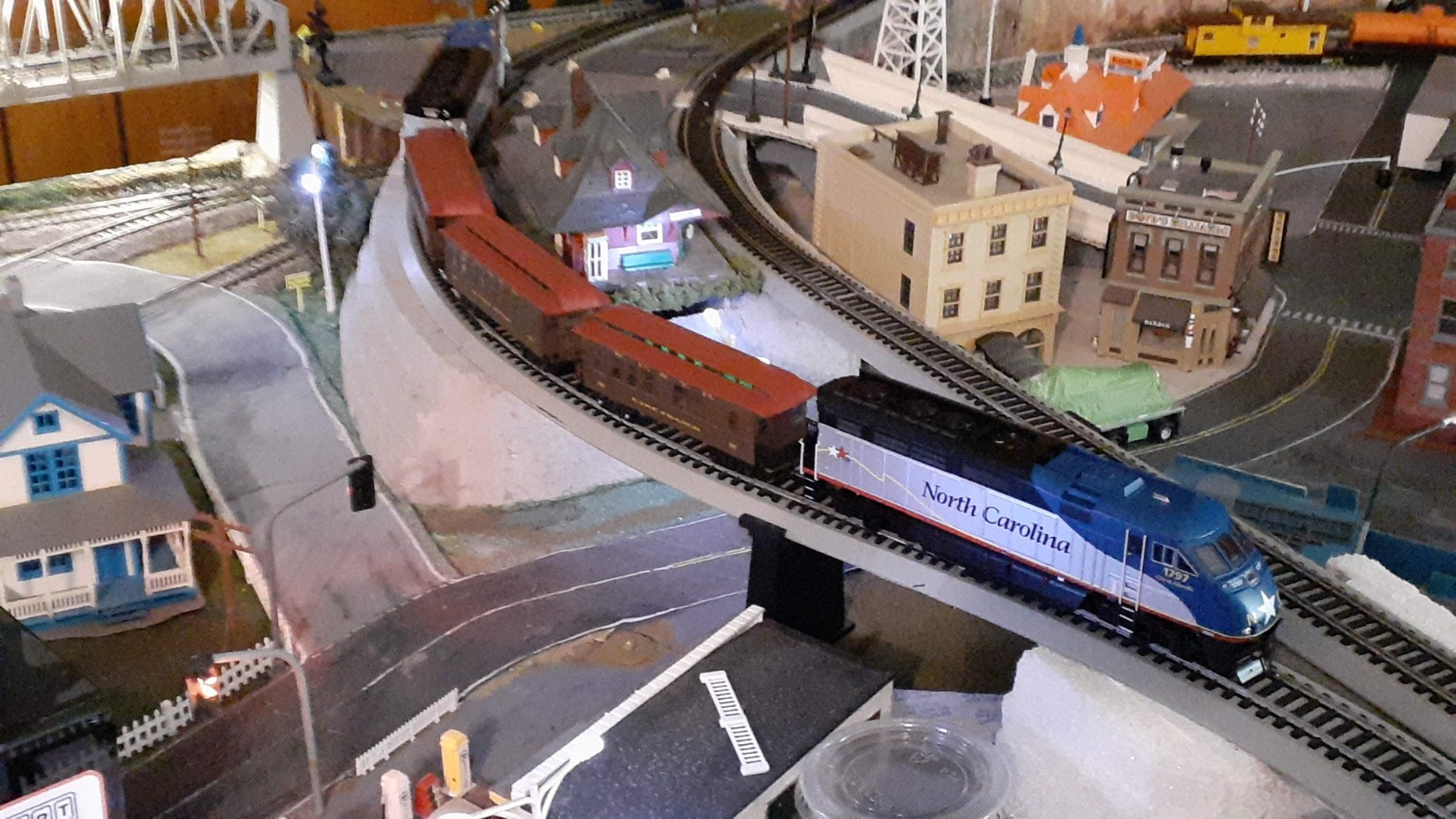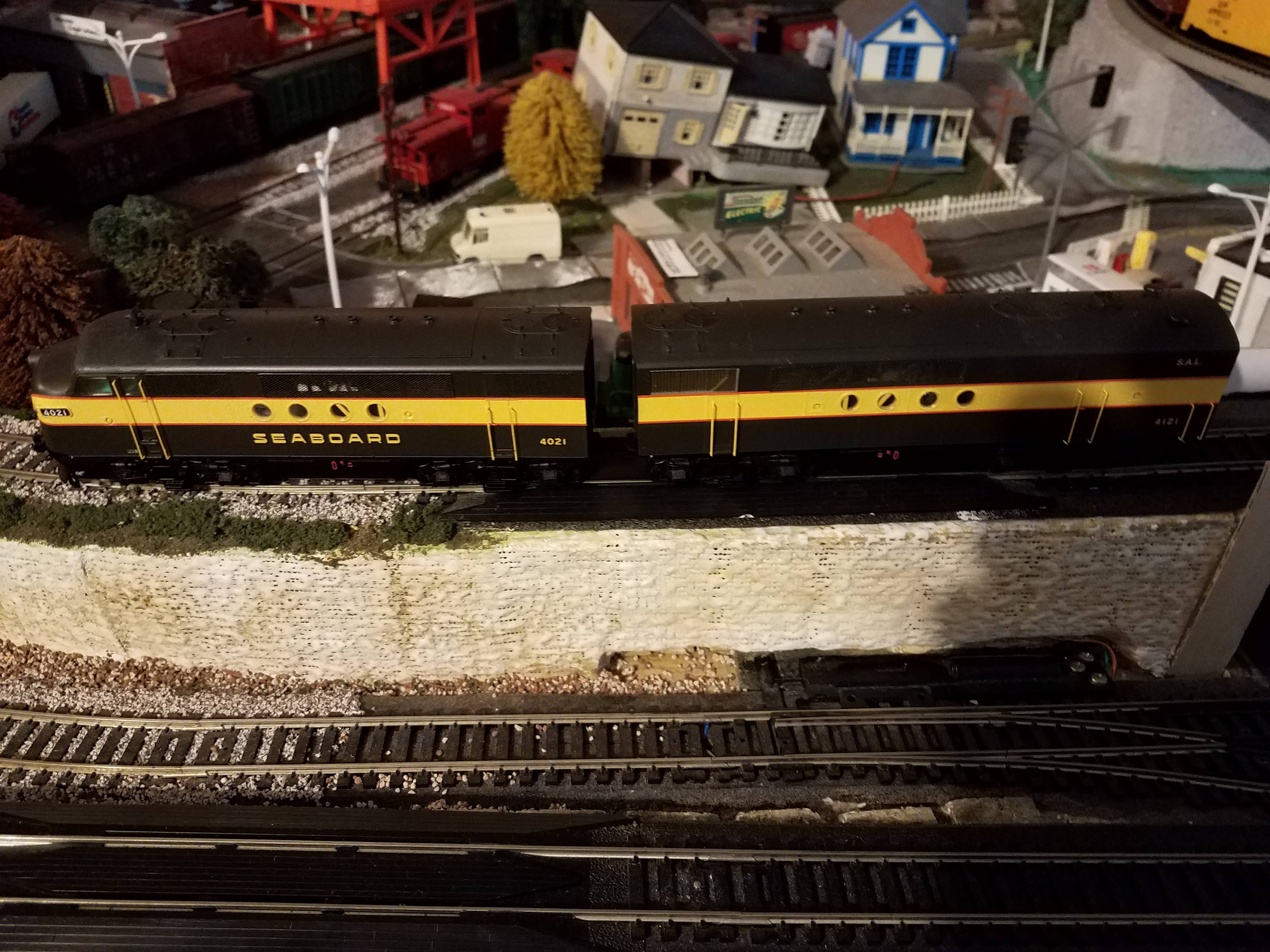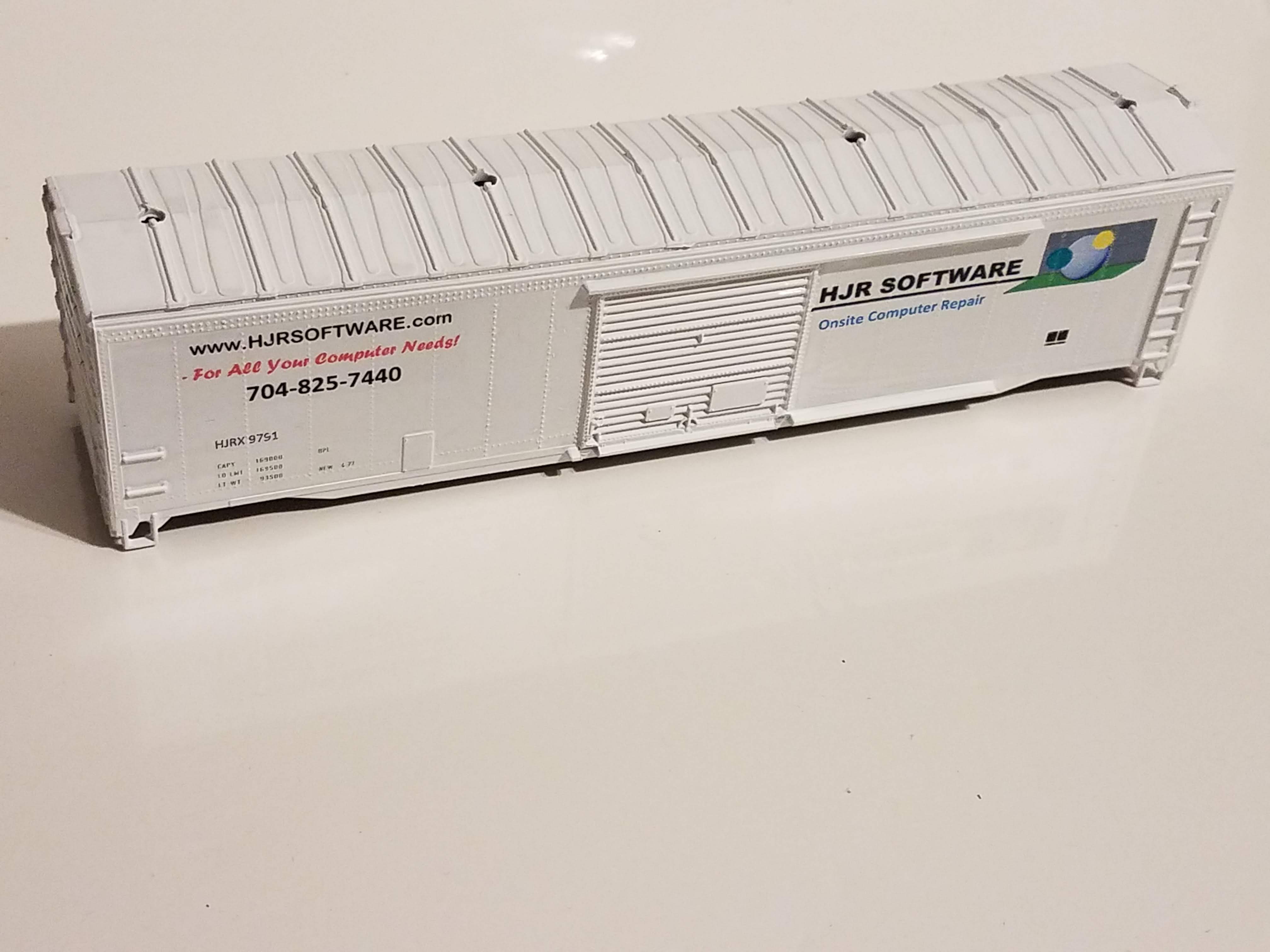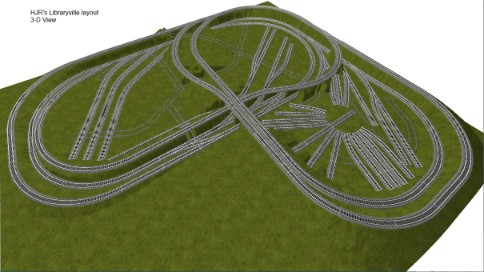
Today, May 4th, 2023, a Veteran on eBay asked me for some pictures of my layout so he could get some ideas about making his own layout one day soon. I realized that I haven’t shared the documentation behind my personal HO scale layout. While I really do not have the time at the moment to get into this, there is a lot that can be learned from my layout if I were to share all that I have learned while making it. I can tell you that as far as it has come, it is still a long way from being finished. But that seems to be on par with the layouts of most model railroaders. They remain a work in progress most of the times. That being said, check out the HJR Lonsway Pike, which is an N scale layout I bought and then enhanced. Originally, I was going to sell it since I didn’t need it, but I have grown so fond of it, I’ve decided to keep it. Plus, I believe it is now priced out of most people’s willingness to buy range. There is a third layout under construction that I REALLY am convincing myself that I am going to sell. It is currently called that U-Haul Box layout. I am documenting it but haven’t begun putting that documentation online yet. It too has a lot of great things in it, including a reverse loop. But alas, let me stop telling you about other things and try to quickly share a little bit about my Libraryville HO scale layout.
RELATIVE BACKGROUND
I could go on and on about my interest in model trains including when it first began, how I got into them as a youngster, my first couple of layouts, and when I put them away. I could also spend hours talking about when I returned to the hobby, why, and what led up to the creation of the Libraryville layout. And I truly should share a lot of that with you, but I am going to have to come back another day and give you all the nitty-gritty details. For now, I’m going to share a little with you about me so that you can get an understanding of WHY the Libraryville layout is what it is. This information may be useful to understand the creation of the Libraryville layout and the materials used in it.
I stopped playing with my trains around 1981, as I entered Highschool. I had an N scale layout that I removed in order to make room for my first home computer, a Commodore 64. This is a legendary pivoting point in my life. That change would put me on a path towards a great future with computers. However, it is my experience with the trains, wiring them up, and adding to my own layout as a youngster that served as very useful steppingstones to make my world of computers work for me.
I try to be a very FRUGAL person. I take good care of the things I buy. I always have. Growing up, I had many hobbies. After electric trains were given to me as Christmas gifts for 3 consecutive years, I took things from there and worked hard raising the money to support all of my hobbies. So, from the 5th grade forward when I acquired train items, I did so using my own money. I had to find ways to stretch a dollar as far as possible. Many fellow model railroaders have heard me talk about the days when I would wait until the day after Christmas, visit K&K Toy’s in the Eastland Mall in Gastonia, and buy trains for 50% off the regular price because they would mark them down the day after Christmas. I still have most of those trains and 95% of them are still in their original boxes which are also still in great shape. Sure, there are few trains that I destroyed as a child and teenager that are long gone, but most of them are still in my personal collection. In fact, the very first Steam Locomotive I received during the Christmas when I was 7 years old, I still have it. It doesn’t run. Somewhere between age 10 and 12, I custom painted it. To this day, I feel I did such a great job on painting it, that I have kept it around simply because the paint job to me looks totally awesome. I should tell you that I have a plastic model tank that I also built and painted about the same time that I still have as well simply because again, to me, I really put a great custom paint job on it too. The locomotive has been stored in tissue paper inside its original case all this time, while the tank car (a much larger scale than N scale) has been on display on shelves in various locations in my room for over 40 years. So, when I tell you that I try to take good care of the things I buy, I mean it. Being frugal has its advantages.
Now, let me fast forward and skip about 40 years of history. Along the way, I’ve developed some great negotiating skills. Don’t play me in monopoly, I almost always win, no matter who I play. So, it’s safe to say, I like a good deal and have learned how to negotiate my way into some excellent buys. The year 2010 arrived and I pulled my trains back out to create an N scale layout inside of a desk in my room. There are additional reasons for this which are another great story to share. It’s best if I tell it to you later, though. That layout also has not been displayed or documented on this site yet.
Skipping past several N scale layouts that I haven’t shared online yet, I discovered that a lot of things related to model trains changed during the 30+ years that my collection was stored in a military trunk in a closet. Inflation and technology increased tremendously. With HO, N, and most O scale trains as a youngster, if I wanted sound effects, I had to make those with my mouth. Sure, O and HO scales had some sound accessories available, mostly for blowing a whistle hidden in a structure somewhere. I had an O scale crossing gate that if I remember correctly, may have made bell sounds and flashed some lights when a train crossed over its pressure sensitive trigger. But that was about the extent of the Bells and Whistles that came with trains back in those days. The O scale trains disappeared (not on their own though) while I was away in college, along with my first original N scale layout. (The tale of how that happened is a tragic story, but another lesson learned about dealing with relatives.)
In 2010, I began looking for deals on tracks on Craigslist and eBay. I found them. And one lucky day, wanting my very first Sound enabled HO scale locomotive, I found someone selling a complete set of tracks and 1 Atlas Master Gold Series Norfolk Southern “Horse Head” DCC Dash 8-40C Diesel Engine Locomotive on Craigslist. Although the seller was interested in selling it all, I went primarily for the locomotive. Upon arriving, he explained his situation to me and we struck up an incredible deal for me and a fortunate opportunity for him. I left his place that day with everything I needed to build a very good layout and I had my first DCC Sound Equipped locomotive that makes all sorts of Sounds. I also received a new Digitrax Empire Builder DCC Command Station in that lot. If I told you how much I paid for all of that, it would make you cry. It was a fraction of the retail price, and it was practically all brand new. Many thanks to CW of Charlotte for letting me buy his train collection. However, this was not my first collection purchase. By this time, I had bought at least 3 other collections from hobbyists getting out of the hobby. If I can share any wisdom with you at all, finding a motivated seller of anything is the right person to buy something you want from.
I am extremely appreciative to the motivated model railroad sellers I have come across over the past 13 years. Thanks to them, I have grown my train collection immensely. The collection now needs a good permanent residence of its own and I am looking for motivated sellers of large storage buildings, craftsmen services, and building materials such as bricks, cement, steel, aluminum siding, roof tiles, and wood (2×4’s, plywood, sheetrock, etc.). If you have any of these items or services to offer at irresistibly low prices, please use my contact us page and let me know. Donations are also welcomed, including HO and N scale train donations.
DESIGNING THE LAYOUT
I have a room in my home referred to as the Library because it is full of wall-to-wall, floor-to-ceiling books, and memorabilia as well as file cabinets full of everything. After building the N scale Desk Layout, I decided to redesign the space in the Library. I used Google Sketch-up and digitized the interior of the room and then digitally recreated the room maximizing the space to take full advantage of an L-Shaped layout while still using practically all the wall space for books and train storage. The file cabinets have their space as well. This room is located upstairs in my house and the steps to it are extremely steep. They are so steep, there is no way to turn or twist a 4’x8′ piece of plywood to get it up the stairs in one piece. However, I can tilt a 4’x4′ piece of plywood and angle it to get it up the stairway. So, I set out to design a modular layout that could be built in my living room and then transported up the stairs and reassembled in the Library there. Hence the name, the Libraryville layout.
I then used train modelling software (that I would normally mention, however I’m trying to come up with a deal between me and the manufacturer that if I recommend their software, they pay me for doing so or at least send me a referral bonus or affiliate commission if my mentioning it results in the sale of it. Google Sketch-up is or was free so I mention it by name without such ambitions. I’ll see what I can do about getting commissions from their paid versions later, except I think a different company is handling that. I like version 8. Everything after that has been useless to me.) to design the Libraryville layout. I made over 10 different designs for the layout. All of the designs are based on the first HO scale layout that I bought from someone else off of Craigslist. His layout was “L”-shaped, but I quickly learned what motivated him to sell it or at least what frustrated him into selling it. And this is a lesson I will pass on to you.
I have noticed that many people trying to build layouts believe they can cut the costs of tracks by using Flex Track. While the concept is sound, one needs to be careful in the design phase of planning their layout. I have come across and have purchased several entire train collections because the sellers TRIED to make a layout using Flex Track and failed to properly account for the minimum radius concerns. In the case of the first HO scale layout I bought, the seller did a great job of following a plan that he found for making his layout benchwork. He even used screws instead of nails which made it easy to take apart and transport to my place. But when I asked him and later confirmed how he came up with the design for his layout, he said, he just started laying track and it all came together. Well, the Lip part of the L is where he completely messed up. Even the shortest of HO scale trains could not navigate the tight radius curves he had made to try to get the trains to turn around in that area of the layout which was part of his mainline. Therefore, he could have never operated a train or even 1 locomotive on his layout and get it to successfully run around his entire mainline. Although I purchased his layout intact with all the track and roadbed glued down to it, I disassembled the entire thing and salvaged what I could, except for the lumber. For over 10 years his board stood outside my home leaned against the wall. Some of it still remains. But I recently cut a piece off of it and used it for an outdoor project. He hand-laid about 1″ thick pink Styrofoam on top of his particle board. I have kept his Styrofoam which I had to cut a large mountain out of portions of it. I claimed the mountain plaster molding too. These items have been stored should a day come that I may need them. The N scale U-Haul layout is going to make use of some of the pink Styrofoam for a mountain base that will have homes under construction on top of it. I haven’t used the plaster mountain pieces yet. I have stored most of the flex track that he used and may have only used 1 full piece that I cut parts from to make one of the versions of the Libraryville layout.
After about the 4th design of the Layout, I made a mock-up floor model of the layout. This means I put down snap track pieces of the layout on the carpet in the living room to get an idea of how the digitally represented model actually looked when put together. In the earliest versions of the layout, I wanted to incorporate 2 major industries for which I had acquired buildings and other accessory parts to support. Those industries were a cement plant and a logging company. The cement plant would be a siding off the outer mainline and the logging plant was on a slanted and elevated curve that would be going through a mountain region. I created my own set of cardboard raisers to temporarily get the elevations of the track to points where I could test the layout. However, when I put that very long Norfolk Southern Dash 8-40C DCC Sound Equipped locomotive on the tracks to test it, it always had trouble navigating the sharp slanted curves near the logging facility. To make matters worse, the tracks were crossing the areas where my modular boards would have come together at 20 to 40 degrees and there was something like 5+ tracks connecting on 2 different levels across all 3 boards. The tracks crossing at the base would have been hard enough. The tracks crossing in the air at slanted elevations and curves would have been a nightmare to put back together after having built the modules. So, back to the train modeling software I went.
Version 6 was nice, and I left the floor design up for several months and played with that, but soon tired of the issues it introduced as well. Finally, I abandoned the idea of including the cement plant and a large wood processing company including a play-action log dump track and finished lumber company. Instead, I reduced the industries to a finished lumber facility, dry goods warehousing, passenger service, and freight distribution transportation services. I also added the round table and roundhouse acquired with the collection that the NS Dash 8-40C was in. I added an engine service facility. And I feel that when it comes to having good realistic elements in a layout, the following are necessities for me:
- Major industries for the trains to service (which pay for the services offered by the railroad).
- Passenger service (if possible) so that the average citizen can make use of the railroad.
- One or more towns or cities and where possible a city should have at least the following buildings: A church, A City office Building, Homes and/or Apartments, A Restaurant, A Gas Station, and/or Convenience Store.
- Homes indicating that people live near the railroads and in the towns.
- Railroad facilities, including places to store trains that are not being used.
- If possible, train maintenance or service facilities.
- Roadways interconnecting the homes, businesses, industries, and railroad facilities.
- As part of train storage there should be a train yard where trains are assembled (by the operator).
- Industry spurs where trains pull next to the industry they service.
- While point to point railroads are fare more realistic, I enjoy letting trains run on their own a lot of times instead of having to control and monitor them nearly every second, so for me, it is important to have a loop so a train can go around on its own. I’m a big fan of having multiple loops so that more than one train can be operating at the same time.
- Trees, Lights, Telephone & Electrical Wires, and various elevations in the landscapes topography.
I eventually joined a train club (more on this elsewhere and later). Among the club members is a guy we call Chuck. Chuck says that a good layout should also include a Bridge somewhere. Thankfully, I included one without knowing this as I like to show areas of waterways and I like bridges too. The Libraryville layout has 3 that are easy to recognize, but it also has tunnels, mountains, and overpasses, which actually create 5 more bridges in reality.
I needed the Libraryville layout to have an “L” shape because of where it was going to go inside the library room. I can maximize the use of the room and the size of the layout as long as it is L-shaped. (Trust me, I played with several other designs including the possible use of a helix, but that was a waste of space for me and unrealistic for my modelling taste.). Because it would be L-Shaped, I like the idea of being able to have 2 trains run on separate loops at the same time. Of course, I also wanted to be able to traverse between the 2 loops any time I wanted and in whatever direction I wanted.
I felt I needed a mountain to hide my ups and downs from one loop to the next since those loops would have to be situated so that 1 loop was over top of the other loop at some point. The concept of the mountain also made it possible to have a tunnel. The Libraryville layout actually has a tunnel with FULL SCENERY inside of it. The Mountain can be lifted up and removed from the layout and the scenery with a smaller mountain inside of it reveals itself in the left rear corner of the layout. Although the layout is not yet completely finished, the idea is that the flat, slanted, Styrofoam platform that can be seen in most of the layout videos covered with a lot of track parts and papers, is to be the top of the mountain with a neighborhood community and a street running through the neighborhood. To tie it all together, the backdrop scenery that is to be painted (by me or a willing artist), is to show a scene that connects the road that goes up the bridge by the Passenger Station, out the back of the layout, around a drawn lake that shows under the bridge, and curves the road into the front entrance into the neighborhood. It is a beautiful scene in my mind, and I think I ruff-drafted (not to scale) and filed that draft away somewhere in my paper notes. The backdrop to the right will show more hillside and another city in the distance that the road going out the right-side rear corner alludes to going to. The scene to be painted on the side-drop on the right is to be mountain and sky, thus putting the entire layout in a valley. In the library room, the left-side of the layout butts up against a cloths rack so the mountain top will have a slight paper-thin painting to integrate that part into the environment. But all of the surrounding scenery is yet to come and has to be perfected once the layout is moved, that is, if it can ever be moved.
BUILDING The Layout
As I already mentioned, I laid test tracks down on my living room carpet of the several different versions of the Libraryville layout. I used my own home-made piers in some places, and I also used parts of Atlas and Bachmann pier sets at one point in time. Some versions I left up for a day or two and others for months. One Christmas came around and I extended that layout that I already had on the floor consisting mostly of Atlas tracks and then connected an entirely new oval of tracks with a spur, all of which I laid down on a large flat piece of cardboard, put my Christmas Tree up in the middle of it, and this was a major hit for my youngest niece. At the time, I had recently bought a Train Set that came with its own Sound Equipped transformer. It is a Walthers train set. (I should look up the name of it, but it’s getting pretty late as I write this line and I need to go to bed soon so I can get up early and meet with guys in our Metrolina Railroader’s club for breakfast and then spend the day manning the club’s layout in Spencer, NC (on May 6th, 2023). So, I’ll provide that name in a later revision.) Anyway, my young niece came over that Christmas and ran my trains and she had a wonderful time doing so. She loved pressing the sound effects buttons on the transformer which made appropriate noises on demand. After that Christmas, it would be the following Christmas when I took a couple days between Christmas Day and New Year Eve, visited Lowe’s, bought all the lumber and hardware that I felt I needed, returned home, and built the benchwork for my layout inside my living room. I cut all the boards that needed to be cut outside, but I assembled them inside. I may have even drilled a couple holes in the boards while inside. I know I installed the rolling casters on the 2’x4’s inside the house. But let me slow down a little bit and give you some details.
Again, I used Google Sketchup many months before to design every aspect of my benchwork. I created digital replicas of 2’x4’s. I had some that are 8′ long but most of them were 4′ long. Inside of Google Sketchup, I designed replicas of scrap pieces of wood that I obtained from a local cabinet maker. I can’t tell you what the actual scraps are made of because I really do not know the names of those pieces of wood. I simply measured what I had on hand and input the measurements into Sketchup to make pieces the lengths that I needed. I also designed my control panels, which are removable. However, digitally, I don’t think I represented the aluminum tubes and rods that I used to attach the control panels to the layout. I also do not remember if I digitally created the drawers inside of Sketch-up. I may have. I will have to look. Maybe I did, because I think I found the slides for the drawers in the Online Objects Warehouse for Google Sketch-up. I remember the drawer slides had to be 24″ long so I had scouted these out at Lowe’s prior to buying them.
All of this brings me to the point that I am trying to make. The benchwork for the Libraryville layout didn’t get designed or built in 1 night. It took many months of planning, visiting Lowe’s to scout out available material, deciding on exactly what material to use, refining the design, and then combining the 2 separate Google Sketchup files so that I ended up with a file that had the digitized drawing of my library room to which I inserted the drawing of benchwork. In Sketchup, I am able to use their 3-D views to examine how the benchwork is to fit inside the room completely. I was able to measure the heights of my window ledges, space out where I wish to put a 42″ TV which was to be used to display a surveillance system of 7 cameras, 1 train cam above the layout, and video from a radio-broadcasting camera mounted on a train car. I designed exactly where to put that TV. I incorporated where the outlets are in my library room so that I had a plan for how to power up the layout. Nothing was left to chance. I worked on how I would access stuck or problem trains in the far, right corner of the layout and every other place on the layout if a derailment should happen.
You see the layout was to be placed against the walls with 3 of its sides being inaccessible by walking around it or standing behind it. The library room is small. Once the layout is in place, I would have very little room to move it and absolutely no way to physically get behind the layout if a serious problem occurs. It should be noted that after years of operating the layout downstairs in my living room, I have concluded that the Libraryville layout will most likely never be placed in the library room. Why? Because I have experienced numerous occasions when I have had to go to the far, right corner of the layout or go behind it while it is downstairs to address issues that could only be addressed by me physically getting into those positions. It would be an impossible nightmare to address those issues if the layout were ever put in its designated place by design. Even though I came up with methods to reach parts of the layout by getting underneath it and leaving only enough room to stick my arm up between the layout and the wall, my arm isn’t long enough to bend the way it would need to bend to try to address some issues. I have since designed a storage building where I wish to one day put the Libraryville layout along with other designed track plans and layouts. I dreamingly referring to that building as my Train Museum. The Libraryville layout will be accessible on all sides in my much larger Train Museum building alleviating the problems related to accessing it from all sides. I have also vowed to never design another layout that will get trapped by being designed to fit into places too small to accommodate necessary and appropriate access to all parts of the layout.
PLANNING how you are going to build a layout, or anything (really), is an absolute must. TESTING your planned design is even MORE important, because you may find that the completely finished railroad layout may not fit or work out as great as you envisioned.
Here is another HUGE lesson to learn: If you choose to collect model trains with the interest and intent of operating those trains on a layout, you need to get some track down (even if it is a temporary circle), put some trains on the tracks, and get them running on that basic layout as soon as possible. Additionally, as you are building your great model railroading empire, MAKE CERTAIN that you are able to operate trains on that layout as quickly as possible and all throughout the development cycle! Try not to have a section out of operating capability for too long and always have some tracks that you can run trains on. Why? I am here to tell you that the number 1 reason I have been able to get such great deals on entire train collections, is because previous train owners have set out to do great things by building incredible model railroads, bought all the things they needed upfront, but either never laid 1 single piece of track, or never got the layout to a point where they could enjoy seeing their collected trains running on even a simple portion of their master planned layout. They became frustrated or distracted. And they gave up long before their dream was realized. Life sets in. They get interested in something else, and before you know it, they have hundreds or thousands of dollars invested in a hobby of trains that they never or rarely get to enjoy. The next thing you know, they are up for sale to whomever will come get them and they’ll almost pay someone to come take them away or they’ll accept much less than they paid for them just to get them out of their way and out of their lives. Many people do not like to be reminded of their failed endeavors and when they get frustrated like this, that’s the reality of it. Sometimes they have help being reminded. Their spouse, siblings, or friends keep bringing it up and nagging them about “What are you going to do with all those trains you bought? Don’t you see now that you wasted a lot of money? You need to get rid of those trains! They are just taking up too much space and you aren’t doing anything with them.” Try not to get yourself into this situation. Build and expand as often as you must. Keep some operational tracks available all the time. BUT if you do get frustrated, tired, or are ready to get out of the model railroading hobby, don’t throw your trains away. Contact me and I’ll be happy to find a new home for your trains. You can either donate them to me or consign them with me/ShowMyHobby.com, and I will help get your trains to someone who will do their best to appreciate them and use them (for a while anyway. Their day may come too when their spouse comes home and asks, “Honey, what are you going to do with those trains?”)
It’s after 1 AM. I’ll have to resume this another day. All additional updates will be provided as posts to this main article.
Started: May 4, 2023. 1st Published: August 12th, 2023. Tags: Libraryville layout, HO scale model railroad, Henry’s Train Collection, Henry’s HO Train Collection.
